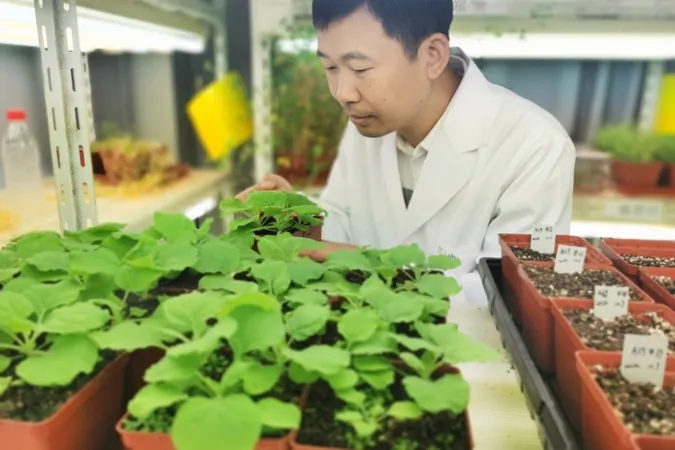
Groundbreaking Study Reveals How Plants Choose Their 'Best Friends' in Soil!
2025-01-24
Author: Li
Groundbreaking Discovery
In a groundbreaking discovery, scientists based in Shanghai have unveiled the sophisticated mechanism by which plants identify beneficial microorganisms from harmful ones in their soil, a finding that could revolutionize sustainable agriculture and bolster global food security.
The Role of Symbiotic Relationships
Plants form symbiotic relationships with a myriad of microorganisms in their root systems. While some fungi provide vital assistance in nutrient absorption, others can be detrimental, extracting resources and resulting in diminished crop yields or even plant death. Understanding this critical distinction of “friend” versus “foe” enables researchers to cultivate crops that minimize reliance on harmful fertilizers while maintaining yield levels and enhancing resilience against disease.
Key Findings of the Study
Researchers from the Center for Excellence in Molecular Plant Sciences at the Chinese Academy of Sciences have pinpointed a vital component known as LysM receptor kinases, found on plant cell membranes, which play a crucial role in detecting microbial signals. These signals prompt plants to either initiate a symbiotic relationship or mount an immune response. As published in a series of international journals from 2015 to 2024, these findings provide valuable insights into this complex interaction.
Challenges in Understanding Plant Microbe Interactions
However, the intricate presence of LysM receptor kinases in flowering plants and their overlapping functions make it challenging to decipher exactly how plants discriminate between various microorganisms. To overcome this hurdle, the team chose to study Marchantia paleacea, a simple early land plant often referred to as common spleen moss, which possesses a more manageable genome and fewer LysM receptors, making it easier to analyze.
Discoveries in Common Spleen Moss
The researchers discovered two specific LysM receptor kinases in common spleen moss—MpaLYR and Mpa-CERK1—that serve as sensors to differentiate between beneficial symbiotic fungi and pathogenic microbes, generating distinct responses based on the type of microorganism detected.
Mechanism of Microbial Detection
In conditions of low phosphorus, the plant releases a hormone prompting beneficial fungi to release short-chain chitin oligomers. These compounds are recognized by MpaLYR, sparking symbiotic responses and simultaneously suppressing immune reactions to long-chain chitin oligomers associated with harmful fungi.
Lead Researcher's Insight
Lead researcher Wang Ertao described this process as “a teacher taking roll call in a classroom,” noting that only the beneficial fungi respond to the hormone and release signals that help the plant absorb essential nutrients like phosphorus and nitrogen.
Significance of the Findings
This finely tuned balance between fostering symbiosis and maintaining immune defense enables plants to thrive in diverse environments while optimizing nutrient acquisition and repelling pathogenic threats.
Implications for Sustainable Agriculture
Published recently in the journal Cell, these findings not only enhance our understanding of plant interactions with soil microbes but also pave the way for new strategies to boost crop efficiency. By increasing the secretion of strigolactones—hormones that attract beneficial fungi—scientists can improve agricultural practices, ensuring a sustainable food supply for the growing global population.
Future of Plant Sciences
Stay tuned for more revelations in the field of plant sciences that could change the way we approach farming!




 Brasil (PT)
Brasil (PT)
 Canada (EN)
Canada (EN)
 Chile (ES)
Chile (ES)
 Česko (CS)
Česko (CS)
 대한민국 (KO)
대한민국 (KO)
 España (ES)
España (ES)
 France (FR)
France (FR)
 Hong Kong (EN)
Hong Kong (EN)
 Italia (IT)
Italia (IT)
 日本 (JA)
日本 (JA)
 Magyarország (HU)
Magyarország (HU)
 Norge (NO)
Norge (NO)
 Polska (PL)
Polska (PL)
 Schweiz (DE)
Schweiz (DE)
 Singapore (EN)
Singapore (EN)
 Sverige (SV)
Sverige (SV)
 Suomi (FI)
Suomi (FI)
 Türkiye (TR)
Türkiye (TR)
 الإمارات العربية المتحدة (AR)
الإمارات العربية المتحدة (AR)